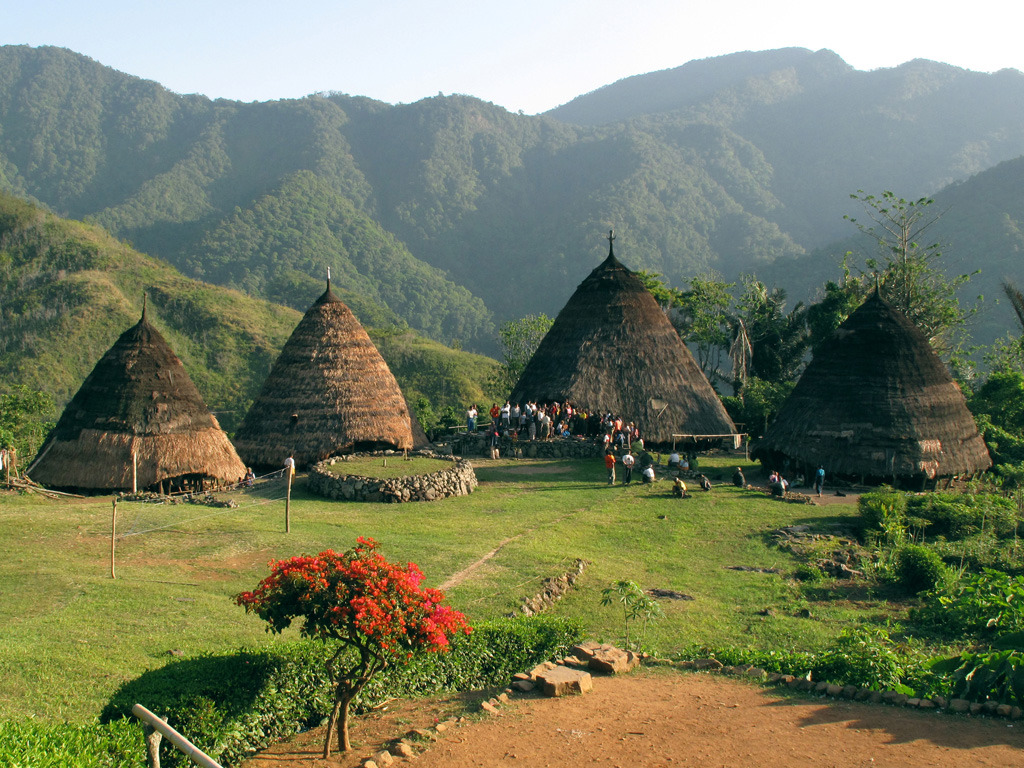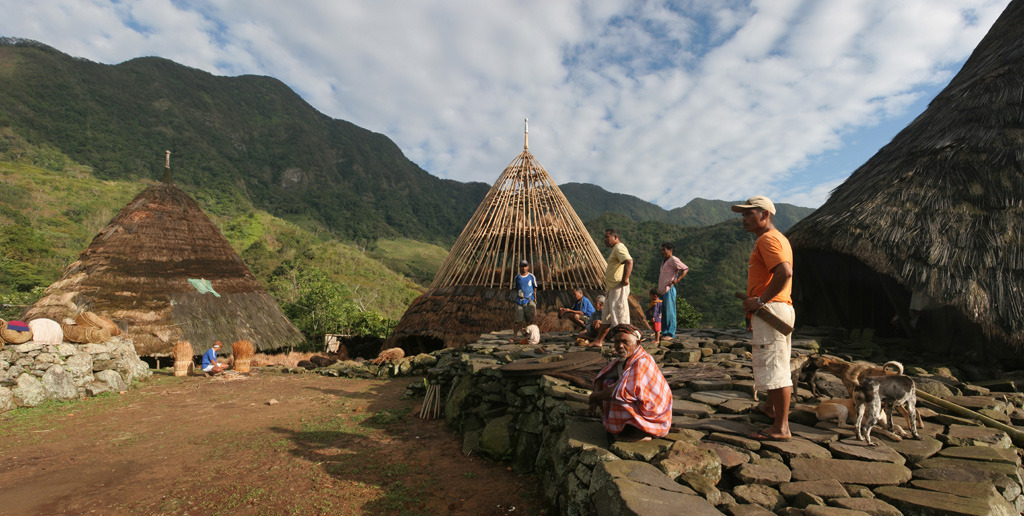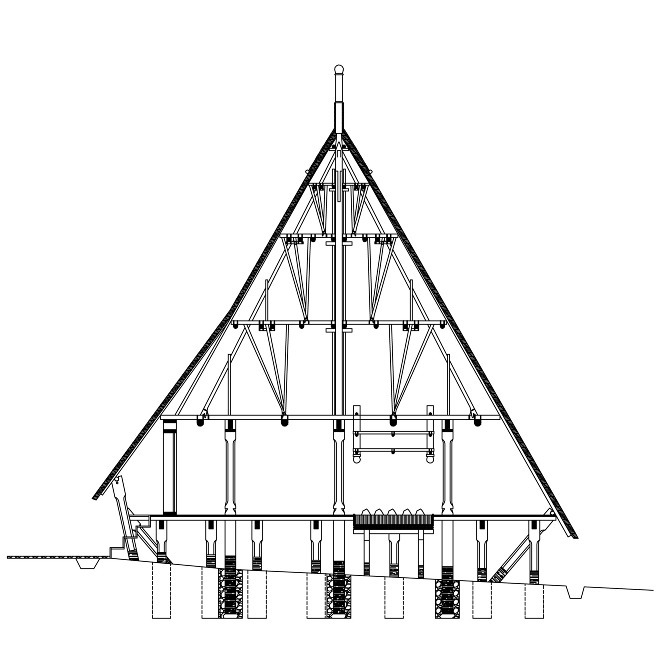V 33 |
Manggarai Mbaru Niang |
type |
|
place |
|
population |
At an altitude of 1100 metres, Wae Rebo is four houses walk from the nearest settlement connected by road. The isolated location has preserved a way of life here which was once typical on the island. Local people grow corn and cassava, as well as coffee, cinnamon and vanilla, which they trade for rice and fish at the market in town.
The village has seven houses, as is the tradition here. If necessary and the elders decide it a new house is built in place of an old one. Large amounts of building material and labour are required for this, so everyone chips in. First of all grass is gathered to thatch the roof, which is dried inside the old house, then a 70-80 year old worok tree is found in the rainforest for the main supporting post, which everyone carries back to the village. The structural frame of the house is made from various types of tree and bamboo found locally, which is then bound together with rattan. It takes 40 people 2 days to complete the roof. Religious ceremonies are an integral part the building process and are when the worok is cut down, at the beginning and end of construction and when the families move in to the house, when hens, pigs or sometimes dogs are sacrificed.
The five concentric levels of the house, which get narrower the further you go up symbolize the people’s roles in the communal solidarity of the village. Poultry are kept in the space underneath the house, while one side of the ground floor is for receiving guests and the other is the living area, where a fire is always burning. The fire is used for cooking and heating and its smoke wards off moths from the roof and stops it rotting. Food and tools are stored on the first floor, the second floor is a grain store and above that is an emergency granary in case of drought or crop failures. The top storey is reserved for the spirits of the ancestors.
Several years ago young Indonesian architects came across the ruined village and decided to restore it with the help of volunteers and local people, renovating the old houses and building three new ones to make up the numbers to seven. The architects won a prize and the village became a world heritage site, and since then more than ten tourists visit it per week. Solar powered electric lighting has been installed and a miniature hydroelectric generator is being built.






